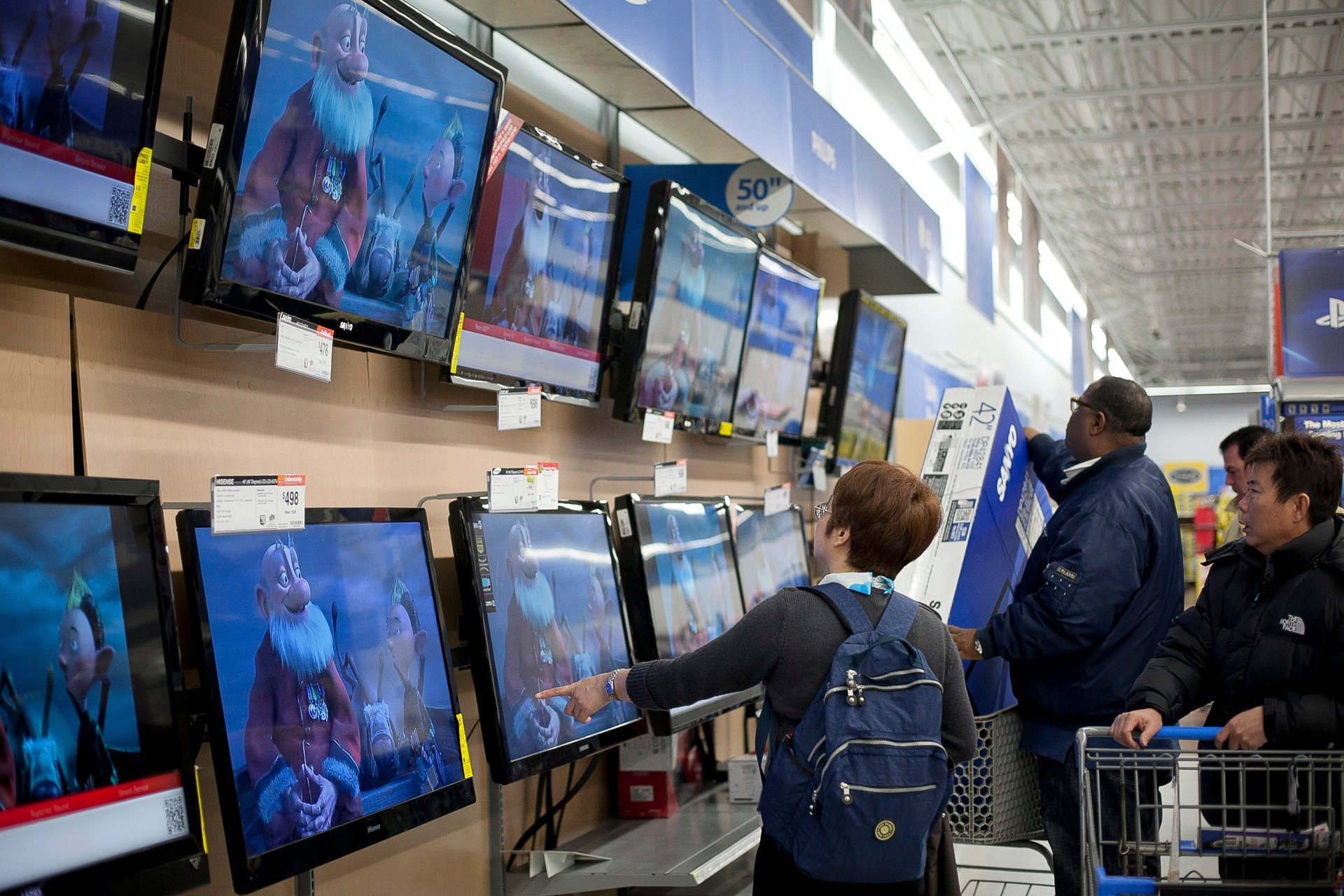Walmart is selling ad space to companies that don't sell products at Walmart
Financial firms, car makers, and even fast food chains may start advertising inside Walmarts this summer

Walmart wants to boost its revenue and is aiming to do so by expanding its advertising efforts.
Suggested Reading
The retail giant said it plans to start offering ad space inside of its stores to companies that don’t sell products at Walmart, a company spokesperson confirmed to Quartz in an email.
Related Content
“National non-endemic brands, known for their large scale brand-building campaigns, are now recognizing the untapped potential of in-store platforms to increase brand exposure,” the company spokesperson said.
The strategy is being spearheaded by the retailer’s advertising unit, Walmart Connect, and will formally launch on Aug. 1. Shoppers can expect to see the commercials when they walk by the TV department and when they use the standalone kiosks.
Walmart said the in-store advertisements “will be relevant based on the customer journey,” and will help brands leverage Walmart’s reputation while customers shop.
Walmart is hawking ad space to financial firms, car makers, and even fast food chains. Such companies often leverage retailers to promote items or services that are not carried by that retailer.
It is also potentially big business for Walmart and for those smaller players. In part because Walmart stands to make additional revenue from those deals, while brands get publicity.
Expanding Walmart’s advertising horizons could also help it compete with retailers like Costco Wholesale and e-commerce giant Amazon.
According to Walmart’s quarterly earnings report, its advertising business (also known as Walmart Connect) generated $3.4 billion in 2023. Meanwhile, during that same time, Amazon recorded $14.6 billion in advertising sales, in part due to its Prime Video ads. In early June, Costco said it was looking to reach a deal with an ad-tech firm to charge advertisers to reach its 70 millions members.
The Arkansas-based Walmart’s latest move closely follows the release of its first annual Adaptive Retail report, in which it said it was stepping into a new era of retail and would need to be dogged in adapting and tailoring experiences to fit individual consumers.